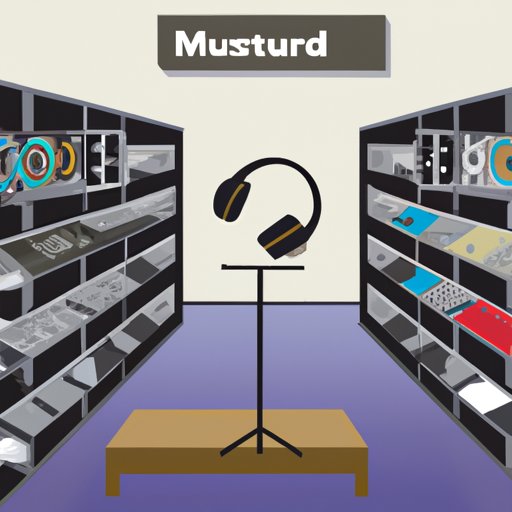Introduction
You’ve likely noticed it when you walk into a store: background music playing in the background. It’s become such a common fixture of stores that many don’t think twice about it. But why do stores play music? What’s the purpose of having music as part of the shopping experience?
Store music is any type of sound or music played in a retail setting. This includes anything from popular songs to instrumental pieces, as well as announcements and other audio clips. Store music is typically used to create a specific atmosphere or to influence the behavior of shoppers.

Investigating the Psychology Behind Music in Stores
To understand why stores use music, it’s important to look at the psychology behind it. Music has been known to have a powerful effect on people’s moods and behavior. Studies have shown that certain types of music can set the tone for a situation, creating a certain atmosphere. Music can also influence how people perceive their environment and how they interact with others.
When it comes to shopping, certain types of music can impact how people shop. For example, upbeat music can encourage customers to move around the store and explore different sections. On the other hand, slower-paced music can create a more relaxed atmosphere, making customers more likely to linger and browse.

Exploring How Music in Stores Affects Shopping Habits
There are numerous benefits to playing music in stores. One of the most obvious is that it creates an inviting atmosphere. Music can help to make a store feel more welcoming and comfortable, which encourages customers to stay longer and spend more time browsing. Music can also help to drown out outside noise, allowing customers to focus on their shopping without being distracted by what’s going on around them.
Another way music in stores can affect shopping habits is by influencing customer experience. Studies have shown that playing the right type of music can help to create a positive emotional connection with customers. When customers feel good about their shopping experience, they’re more likely to return to the store and recommend it to others.
Examining the Benefits of Playing Music in Stores
In addition to helping create an atmosphere and influencing customer experience, there are economic advantages to playing music in stores. Studies have found that playing music can increase sales, particularly when it’s used to create a certain mood or atmosphere. The type of music played can also have an effect; studies have found that stores that play classical music tend to have higher sales than those that play pop music.
Music can also be used to influence the amount of time customers spend in a store. Studies have found that when stores play slow-paced music, customers tend to stay longer and spend more time browsing. On the other hand, playing fast-paced music can encourage customers to move quickly through the store.
Conclusion
Store music is a powerful tool that can be used to influence customer behavior and create an inviting atmosphere. It can also provide economic advantages, such as increased sales and longer customer visits. Understanding the psychology behind store music and how it can affect shopping habits can help retailers create the perfect atmosphere for their customers.
(Note: Is this article not meeting your expectations? Do you have knowledge or insights to share? Unlock new opportunities and expand your reach by joining our authors team. Click Registration to join us and share your expertise with our readers.)
